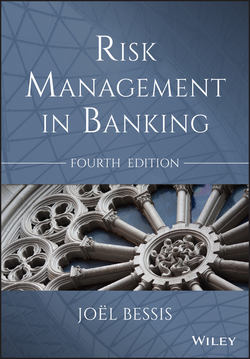Читать книгу Risk Management in Banking - Bessis Joël - Страница 8
На сайте Литреса книга снята с продажи.
1
RISKS AND RISK MANAGEMENT
1.1 Uncertainty, Risk and Exposure to Risk
ОглавлениеRisk has been defined in various ways across time. Some definitions focus on the probability of an event, others refer to the uncertainty of outcomes, positive or negative, and others to risks as the subset of uncertainty that can be quantified.1
Risk in finance is defined as the randomness of the return of investments, including both positive and negative outcomes. Under this view, a greater expected return is associated with a greater variability of outcomes.
In the financial industry, the view of risk is different. Risk is defined by the uncertainty that has adverse consequences on earnings or wealth, or the uncertainty associated with negative outcomes only. This view is that of regulators and risk managers. Regulations aim at enhancing the resiliency of financial firms and of the financial system in stressed conditions. Risk managers see their role as being accountable for identifying, assessing and controlling the likelihood and the consequences of adverse events for the firm.
Under this view, risk is seen as the potential of loss resulting from the interaction with uncertainty. The interaction arises from the exposure of financial firms to such randomness. Exposure is the extent to which a business could be affected by certain factors that may have a negative impact on earnings. For example, exposure to foreign exchange rate is the size of revenues in foreign currency; exposure to interest rates can be measured by the size of debt indexed on market rates.
The uncertainty cannot be eliminated but the exposure to uncertainty can be changed. Examples are numerous. A firm having revenues in foreign currency can borrow in the same foreign currency to minimize the earning impact of foreign exchange rate fluctuations. A firm lending floating rate can reduce the fluctuations of net interest income, the interest revenue minus interest cost, etc., by borrowing floating rate.
Exposures can be long or short. Being long is the conventional practice for investing in assets or portfolios. The holder of an asset is long and the risk is that the asset value declines. A short position can be seen as the mirror image of long positions and gains when asset values move down. In investing, a short position is the sale of a borrowed asset, such as a stock, which is later bought back for returning the assets to the lender of the security. In the event of a downside movement, the borrower of the stock buys back the stock at a lower price, hence makes a gain.
Hedging risks can be achieved by taking inverse exposures to long positions. Holding a stock is a long position, which takes a loss if the equities decline. A short position is symmetrical. When a party has both a long and a short position in the same stock, the gains and losses exactly offset. Hence, a perfectly hedged position is subject to uncertainty, but is not exposed to risk.
Hedging can be achieved with cash instruments, but is commonly done with derivatives. Derivatives are instruments, the value of which derives from other underlying assets. For example, the above firm willing to hedge its long exposure in foreign currency could enter into a contract, setting today the future exchange rate for converting foreign revenues in the home currency. This is easier than trying to borrow in the foreign currency. Because of their flexibility, derivatives are extensively used.
1
Knight, F. H. (1921), Risk, Uncertainty and Profit, New York.
